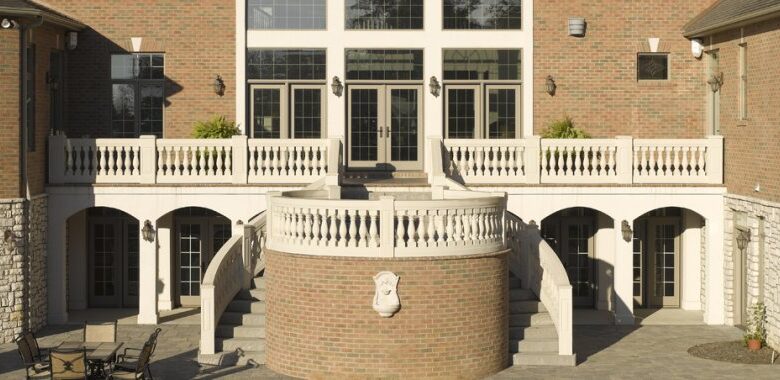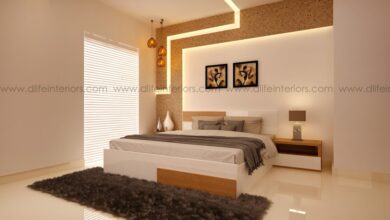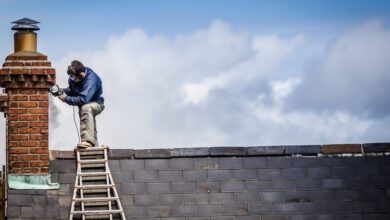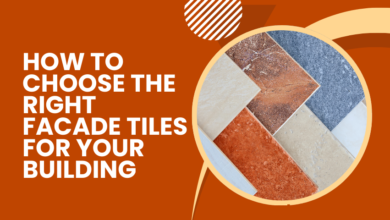Are You Overlooking These Essential Aspects of Balustrades?

Balustrades, an integral part of architectural design, serve both aesthetic and functional purposes. These structures are essential for ensuring safety and enhancing the visual appeal of buildings. In this guide, we will delve into the history, types, materials, installation, maintenance, and contemporary trends in balustrades.
History of Balustrades
Ancient Beginnings
The concept of balustrades dates back to ancient civilizations. The earliest known use of balustrades was in Assyrian palaces, where they were primarily used as railings to safeguard against falls from elevated platforms. These early versions were rudimentary but served the fundamental purpose of providing safety.
Renaissance Revival
During the Renaissance period, balustrades gained prominence in Europe. Italian architect Sebastiano Serlio was among the first to document their use in classical architecture. The balustrade’s design became more elaborate, incorporating intricate carvings and designs, which were often inspired by Roman and Greek architecture. This era marked the transition of balustrades from mere functional elements to significant decorative features.
Modern Developments
In the 19th and 20th centuries, the Industrial Revolution and advancements in materials technology brought significant changes to balustrade design and manufacturing. Iron, steel, and later, glass and stainless steel, began to be used, allowing for more innovative and modern designs. Balustrades became a staple in both residential and commercial architecture.
Types of Balustrades
Balustrades come in various types, each suited for different applications and aesthetic preferences.
Classic Balustrades
Stone Balustrades
Stone balustrades are timeless and have been used for centuries in grand buildings and monuments. Made from materials such as marble, limestone, and granite, these balustrades offer durability and a majestic appearance.
Wooden Balustrades
Wooden balustrades provide a warm and traditional look. They can be crafted from various types of wood, including oak, mahogany, and pine. These balustrades are often found in historic homes and buildings, offering a classic charm.
Modern Balustrades
Glass Balustrades
Glass balustrades are popular in contemporary architecture due to their sleek and minimalist design. They provide an unobstructed view and allow natural light to pass through, making spaces appear larger and more open.
Metal Balustrades
Metal balustrades, including those made from stainless steel, aluminum, and wrought iron, are known for their strength and versatility. These balustrades can be designed in a variety of styles, from ornate to industrial, making them suitable for various architectural themes.
Composite Balustrades
Composite balustrades combine materials such as wood and plastic to create durable and low-maintenance options. They are resistant to weathering and are often used in outdoor settings like decks and patios.
Materials Used in Balustrades
The choice of material for balustrades significantly impacts their appearance, durability, and maintenance requirements.
Natural Materials
Wood
Wood is a traditional material that offers warmth and natural beauty. Different types of wood provide varying levels of durability and aesthetic appeal.
Stone
Stone balustrades are known for their durability and classic elegance. Marble, granite, and limestone are popular choices for their timeless appeal and strength.
Synthetic Materials
Metal
Metal balustrades, including stainless steel, aluminum, and wrought iron, are valued for their strength and modern aesthetic. They can be powder-coated or treated to resist corrosion, making them suitable for both indoor and outdoor use.
Glass
Glass balustrades offer a modern, sleek look. They are often used in contemporary designs to provide unobstructed views and allow natural light to flow freely.
Composite Materials
Composite materials combine the best properties of wood and plastic, offering durability and low maintenance. They are ideal for outdoor use and can mimic the appearance of natural wood without the associated upkeep.
Installation of Balustrades
Proper installation of balustrades is crucial for ensuring safety and achieving the desired aesthetic effect.
Planning and Design
Assessing the Space
Before installation, it is important to assess the space where the balustrade will be installed. Consider factors such as the height, width, and style of the balustrade to ensure it fits seamlessly with the existing architecture.
Choosing the Right Design
Select a design that complements the overall style of the building. Consider factors such as material, color, and finish to achieve a cohesive look.
Installation Process
Measuring and Marking
Accurate measurements are essential for a successful installation. Mark the positions of the balustrades on the floor and walls to ensure they are evenly spaced and aligned.
Fixing the Balustrades
Secure the balustrades to the floor and walls using appropriate fasteners and adhesives. Ensure they are firmly fixed to prevent any movement or instability.
Finishing Touches
Once the balustrades are installed, apply any finishing touches such as painting, staining, or polishing to enhance their appearance and protect them from wear and tear.
Maintenance of Balustrades
Regular maintenance is essential to keep balustrades looking their best and functioning properly.
Cleaning
Wood Balustrades
Clean wooden balustrades with a mild detergent and water solution. Avoid using harsh chemicals that can damage the wood. Regularly polish or wax the wood to maintain its luster and protect it from moisture.
Stone Balustrades
Stone balustrades should be cleaned with a pH-neutral cleaner to avoid damaging the surface. Periodically inspect for cracks or chips and repair them promptly to prevent further damage.
Metal Balustrades
Metal balustrades can be cleaned with a mild detergent and water solution. Use a non-abrasive cloth to avoid scratching the surface. For stainless steel, use a stainless steel cleaner to remove fingerprints and smudges.
Glass Balustrades
Clean glass balustrades with a glass cleaner or a mixture of water and vinegar. Use a soft cloth to avoid scratching the surface. Regularly check for any chips or cracks and replace damaged panels promptly.
Repairs
Inspecting for Damage
Regularly inspect balustrades for signs of damage such as cracks, chips, or loose fittings. Address any issues promptly to prevent further deterioration and ensure safety.
Repairing and Replacing
Repair minor damage such as small cracks or chips with appropriate fillers or adhesives. For more significant damage, consider replacing the affected sections to maintain the integrity and appearance of the balustrade.
Trends in Balustrade Design
Balustrade design has evolved over the years, reflecting changing architectural trends and technological advancements.
Minimalist Designs
Minimalist balustrades with clean lines and simple designs are increasingly popular in contemporary architecture. Materials such as glass and stainless steel are favored for their sleek and unobtrusive appearance.
Sustainable Materials
Sustainability is a growing trend in all aspects of construction and design. Balustrades made from recycled or eco-friendly materials are gaining popularity as more people seek to reduce their environmental impact.
Custom Designs
Custom-designed balustrades are becoming more common as homeowners and architects look for unique and personalized solutions. Advances in technology, such as CNC machining and 3D printing, allow for intricate and bespoke designs that were previously difficult to achieve.
Choosing the Right Balustrade Provider
Selecting the right provider is crucial to ensure the quality and longevity of your balustrades.
Factors to Consider
Reputation and Experience
Choose a provider with a solid reputation and extensive experience in the industry. Look for reviews and testimonials from previous clients to gauge their reliability and quality of work.
Range of Products
A good provider should offer a wide range of balustrade designs and materials to choose from. This allows you to find a solution that fits your specific needs and preferences.
Customization Options
If you have specific design requirements, look for a provider that offers customization options. This ensures you get a balustrade that perfectly matches your vision.
Quality Assurance
Ensure the provider uses high-quality materials and follows stringent manufacturing standards. This guarantees the durability and safety of your balustrades.
Example: Melton Classics
Melton Classics is a well-known provider of high-quality balustrades. With a wide range of products and customization options, they offer solutions for both traditional and contemporary designs. Their commitment to quality and customer satisfaction makes them a reliable choice for your balustrade needs.
Conclusion
Balustrades are a vital element of architectural design, providing both safety and aesthetic appeal. From their historical origins to modern innovations, balustrades have evolved significantly. Whether you prefer the classic charm of wooden or stone balustrades or the sleek look of glass and metal, there are numerous options to suit your needs.
Proper installation and maintenance are essential to ensure the longevity and functionality of balustrades. Regular cleaning and timely repairs will keep them looking their best and performing effectively.
As architectural trends continue to evolve, balustrades remain a key feature in both residential and commercial buildings. With the right design and materials, balustrades can enhance the beauty and value of any space.



